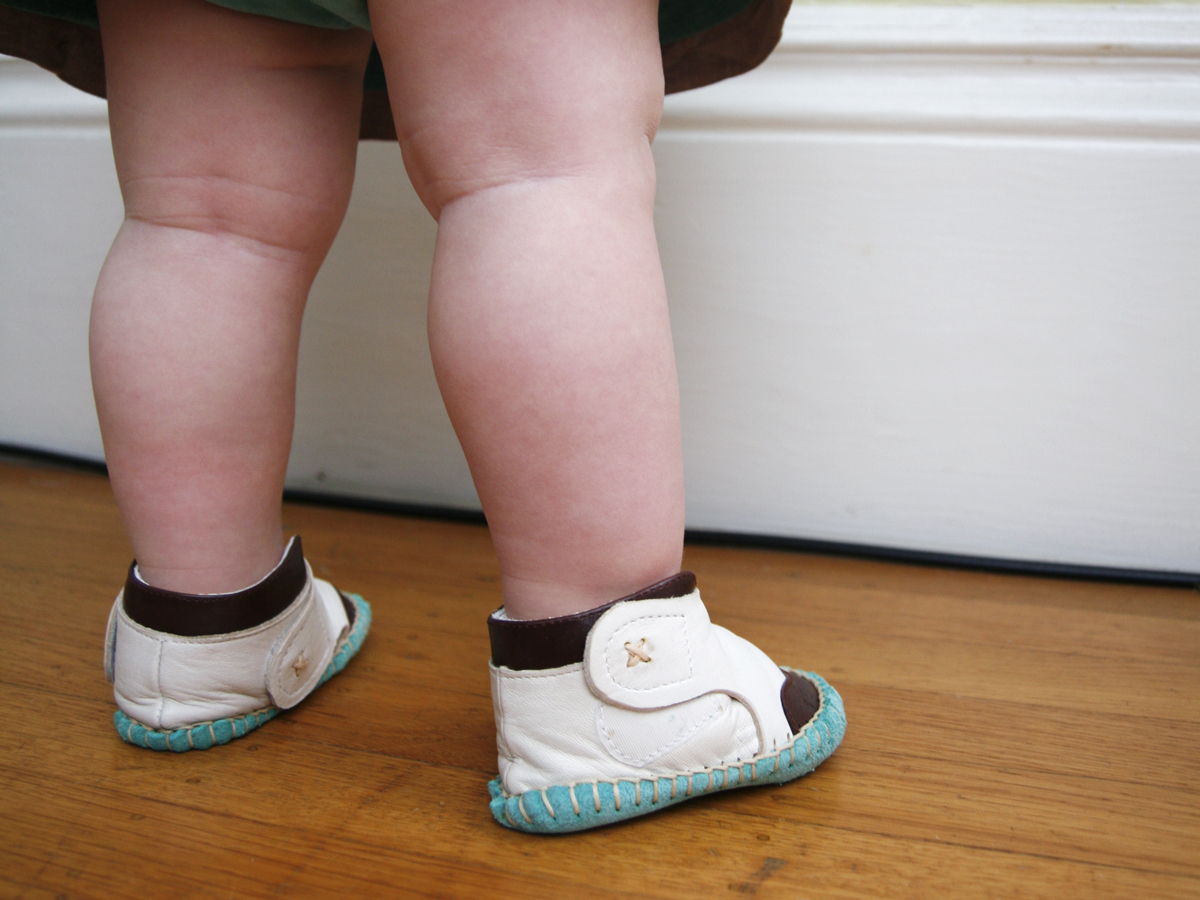A good pair of shoes gives us the opportunity to strike the fine balance between great design and function — and that goes for baby shoes, too. Babies’ feet are soft and flexible, so they can be squeezed into almost any shoe. But because their little bone structures are still taking shape, it’s not a good idea to force their spongy little piggies into hard-shelled receptacles.
The shoes I’ve designed here, for babies between the ages of 6 and 14 months, have just the right amount of structure to support the feet, but still allow them a wide range of motion. The leather supports comfortably and breathes naturally. And the Velcro flaps and big openings make getting them on and off fuss-free.


